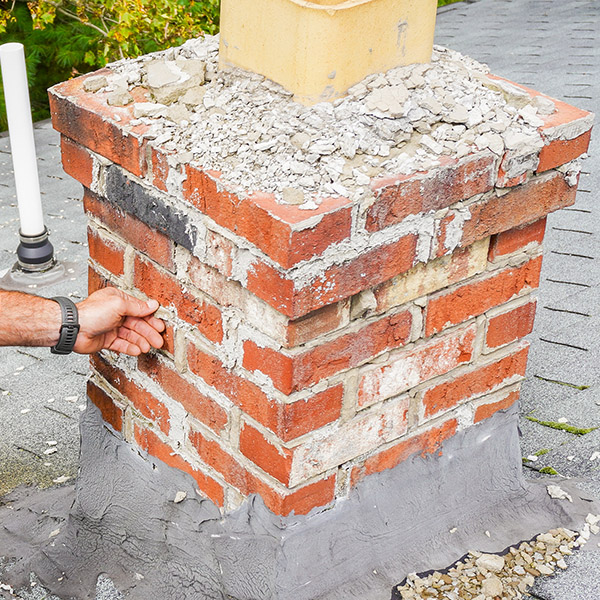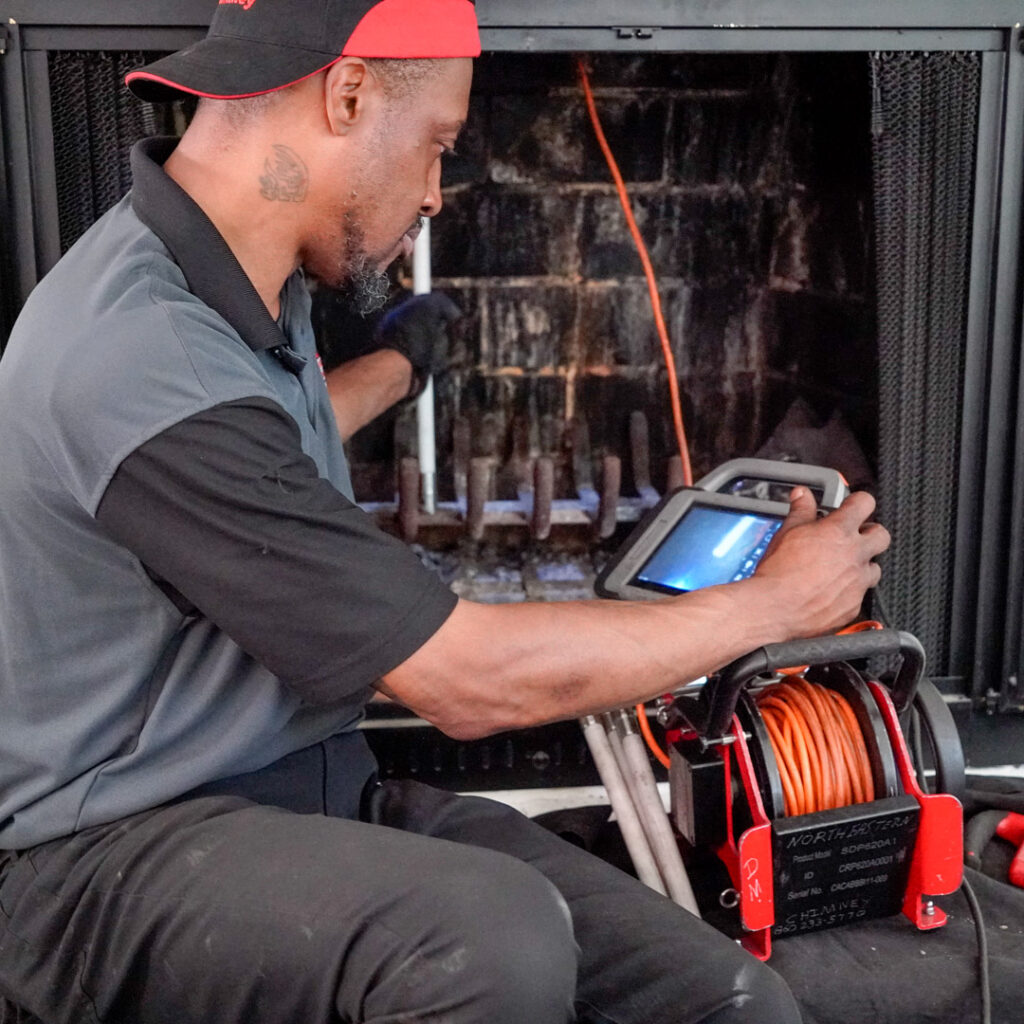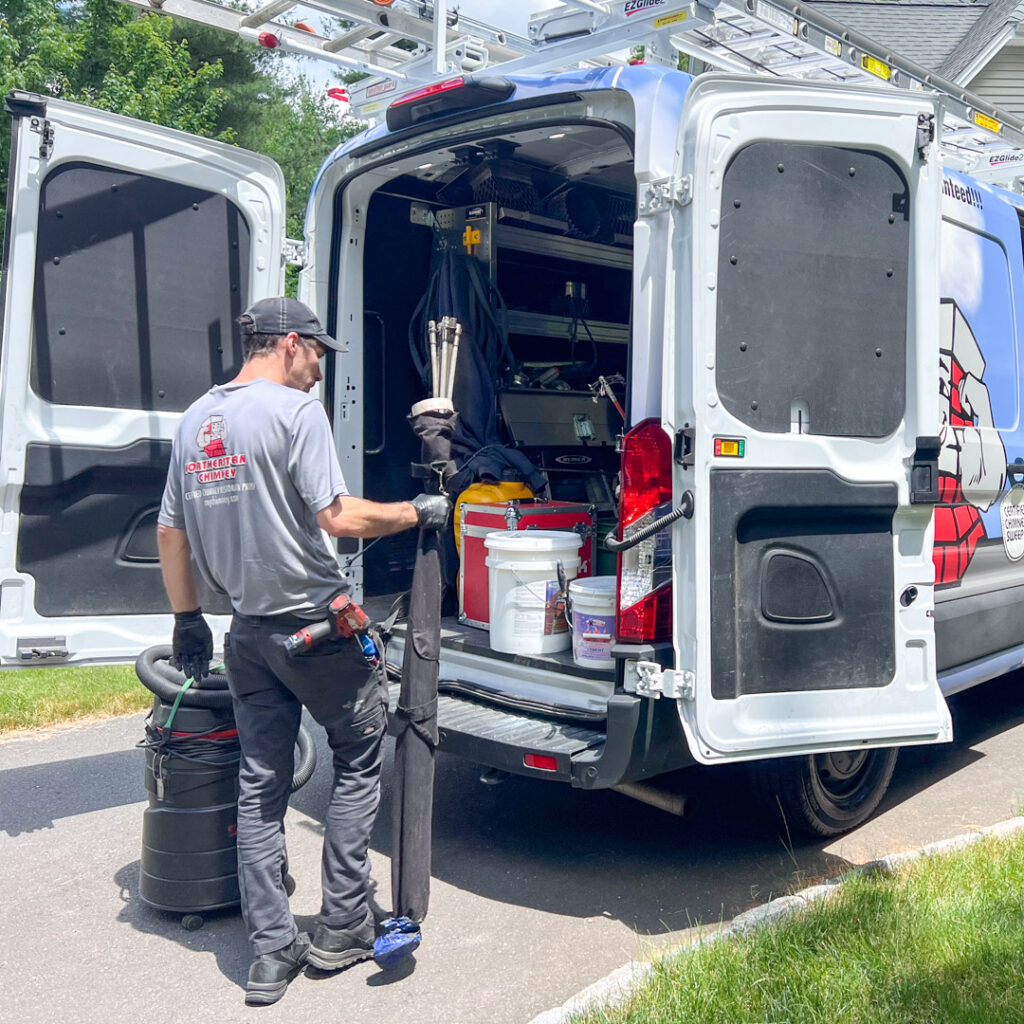Fireplaces are a popular addition to any home because they are both visually appealing and soothing. However, if you use your fireplace frequently or after a lengthy time of inactivity, you must have it inspected and cleaned by a chimney sweep.
There are plenty of reasons you should have your chimney cleaned by a chimney sweep. These reasons include:
You prevent chimney fires
In most cases, homeowners who attempt to clean their chimneys themselves frequently end up with damaging fires. This is especially true if you have creosote in your chimney.
In fact, creosote buildup is the primary cause of chimney fires, and even a stray spark or high temperature can start one. Depending on how much creosote has accumulated prior to ignition, the resulting fires can burn for extended periods and be quite hot.
Even if it does not cause damage to other areas of your home, structural damage to the chimney area can be severe and expensive to repair.
While there are products available in stores to assist in reducing creosote buildup, you should never use them in place of expert cleaning.
Remember that creosote can be challenging to remove after it has accumulated, requiring specialist equipment and chemicals. Hiring a professional chimney cleaner is always the best option for eliminating harmful creosote.
You have an easy time identifying any hidden issues with the chimney
When cleaning or updating your fireplace and chimney on your own, you risk overlooking problems that professionals can identify.
Your chimney is made up of several components, all of which must work together to keep your home safe from carbon monoxide, fire, and water damage.
For example, a skilled cleaner will be able to detect problems with the chimney’s bricks and motor, the damper system, and the flue. Many flaws in these areas may go undiscovered unless you know what to look for.
As a result, DIY projects expose you to either overlooking flaws or causing damage if the item you’re working on has structural issues.
Chimneys can wear down over time as a result of weather, temperature changes, and exposure to corrosive materials. Many of these issues can be resolved if identified early enough.
While this is the case, because many individuals skip routine chimney cleanings, these problems frequently worsen until they become urgent and costly to repair.
Damaged flue liners, warped dampers, and fractured chimney crowns are some of the most prevalent problems that an expert may quickly identify.
Regular inspections and cleanings can help you detect these issues early, saving you time and money. Your fireplace will also be significantly safer to operate.
You increase the lifespan of your flue liner.
Flue liners are one of the most crucial components of your chimney since they protect your home from both fire and carbon monoxide. It accomplishes this by helping to protect the chimney from the high temperatures created by fires, as well as the corrosive elements emitted by smoke.
This insulation also prevents carbon monoxide from entering your home through fractures in the masonry.
Having your chimney professionally cleaned at least once a year can help to maintain the flue liner by removing buildup. Creosote and soot can cause degradation by trapping moisture inside.
Moisture can progressively wear down the liner over time, requiring you to replace it. However, by cleaning your liner on a regular basis, you can extend its life.
Similarly, a professional chimney sweep will be able to inform you if there are any issues with your current lining and recommend when you should replace it.
The contractor gives you professional advice.
Professional training and experience also include the ability to provide professional advice to homeowners. For example, a professional chimney sweep can advise you on how to maintain your fireplace and chimney best year-round. If they detect that you have a lot of creosote buildup, they may recommend using a different type of wood to help reduce it.
As previously said, the professionals can also identify any issues you may be experiencing. While some problems may not require urgent attention, being aware of them early on allows you to plan ahead of time to have them addressed before they worsen.
This type of advice may be pretty beneficial to homeowners who have fireplaces, as it can keep you informed about how to use and maintain your fireplace and chimney effectively.
You get to use professional tools in your chimney.
As previously stated, DIY is about saving money, but needing to invest in costly professional instruments contradicts the point. Professional chimney sweepers already have access to the best tools for the task and understand how to use them.
Some of these tools are powerful and specialized for removing creosote buildup, and professionals can combine them with chemicals that can be dangerous if not used correctly.
Furthermore, professionals will have access to high-tech cameras that can detect blockages and see hard-to-reach areas in your chimney. These cutting-edge technologies allow them to view every inch of your chimney and identify even the smallest faults before they become significant issues.
Although you could purchase these instruments yourself, the cost would be far higher, and without knowing how to utilize them efficiently, it would be a waste. Leave tools like these to trained professionals.
You save money
The primary reason people do DIY jobs is to save money. However, if you don’t have the correct equipment for the job, combined with the right know-how, you can turn a minor issue into a much larger and more expensive one.
While you may desire to save money by skipping professional cleaning, you may be jeopardizing your safety and causing future difficulties.
For example, if you try to clean your chimney yourself, you may unintentionally cause damage, resulting in a leak that goes undiscovered for months.
This mistake might result in extensive water damage, and the water can even contribute to decay, which can lead to structural issues.
What was once a simple cleaning task has now escalated into a significant issue that might cost a lot of money to repair.
Don’t put yourself in danger of finding yourself in a scenario like this. Always hire an experienced professional so that you can be confident that the job is completed correctly and that any problems are identified and fixed as well as they should.
Parting shot
These are some of the reasons you should hire chimney cleaning services Columbia MD to maintain your chimney. When hiring, always ensure that you hire the most experienced.
The post Why Hire a Chimney Sweep? first appeared on First Class Chimney Services.
This post first appeared on https://www.firstclasschimneyservices.com
 Common Causes of Chimney Leaks
Common Causes of Chimney Leaks





 How Do I Know If There Is An Issue?
How Do I Know If There Is An Issue?